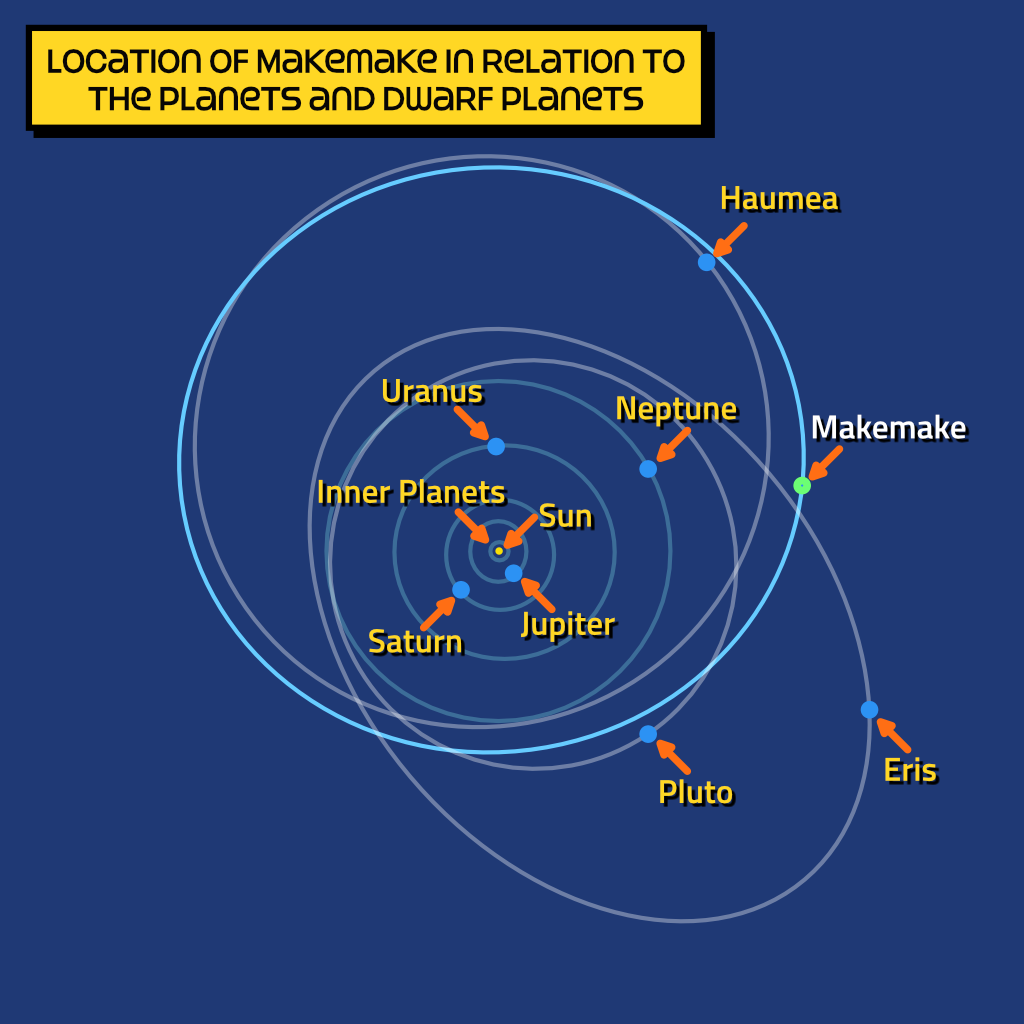Welcome to Makemake!
Makemake, a distant dwarf planet named after the creator deity of the Rapa Nui people of Easter Island, resides in the depths of the Kuiper Belt, a region beyond Neptune. Discovered in 2005, this remote world is thought to have a reddish-brown surface and one known moon, MK2.
 AI generated image of Makemake and its moon, showing a representation of the dwarf planet's possible appearance based on observations
AI generated image of Makemake and its moon, showing a representation of the dwarf planet's possible appearance based on observations
4,222,961,590 miles
45.43 A.U.
891 miles
-405 °F
Makemake is one of the Solar System's five recognised dwarf planets, alongside Ceres, Pluto, Haumea, and Eris. All except from Ceres exist beyond Neptune's orbit so are also classed as Trans-Neptunian Objects. Dwarf planets are bodies that are spherical - or almost spherical - but that, unlike the regular planets, share their orbits with other objects.
Situated in the Kuiper Belt, Makemake orbits the Sun between 5.77 billion and 7.90 billion kilometres (3.59 to 4.91 billion miles), taking about 306 years to complete one orbit. Its path is eccentric is tilted relative to the Solar System's plane. It rotates once every 22 hours, which is quite a long time for a dwarf planet. Most have shorter rotations. It is not really understood why Makemake has a relatively slow rotation period.

When compared with the sizes of the other dwarf planets, Makemake is kind of in the middle. When compared with the size of Earth though, or Earth's moon, it is much smaller. The below image shows these objects compared. And there isn't really a lot more for me to say about them. Enjoy the picture instead!

Makemake was discovered on 31st March 2005, by a team of astronomers led by Mike Brown at the Palomar Observatory in California. They used a telescope specifically designed to search for objects far beyond Neptune in a region of space called the Kuiper Belt, an area filled with small icy bodies orbiting the Sun. The team nicknamed the object Easterbunny as it was found just after Easter.
The discovery was significant because "Easterbunny" is one of the largest objects found in the Kuiper Belt. At the time of the discovery, Pluto was still considered to be a planet, and it was possible that "Easterbunny" would also be classified as one too. Instead, astronomers decided to create a new classification for such objects, and came up with the term dwarf planet. Easterbunny took on its official name of Makemake and became one of the first recongised dwarf planets. Its Easter-time discovery is reflected in it being named after the creation god of the Rapa Nui people of Easter Island.
Although Makemake was discovered in 2005, it had actually been photographed much earlier in 1955. At the time, astronomers didn't recognise it a newly-discovered world. Such an image is called a precovery image. By revisiting the 1955 picture, astronomers were able to confirm its orbit.





